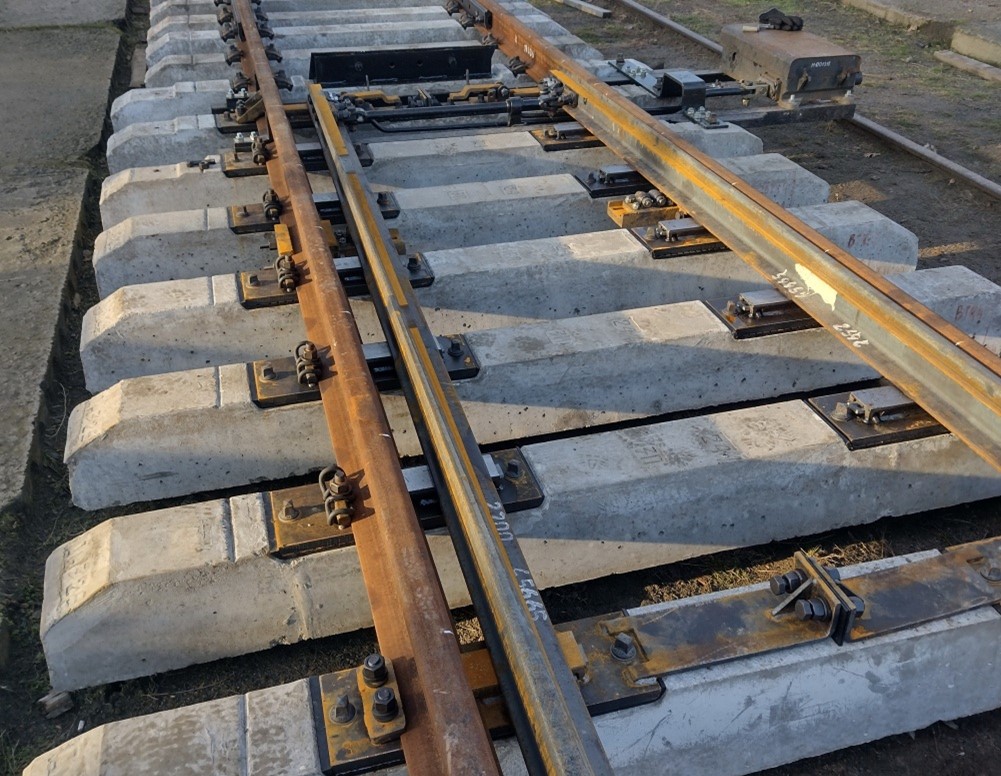The analytic hierarchy process as a cognitive tool for evaluating switch components
Abstract
The purpose of this study is to improve the approach to the comprehensive evaluation of switch elements by applying the Analytic Hierarchy Process (AHP). This method makes it possible to determine their priority according to safety and efficiency criteria, as well as to justify optimal strategies for modernization and reconstruction under conditions of increasing train speeds. The scientific approach involves the use of AHP with consideration of the specific operational features of switches on high-speed railways. In particular, the study accounts for higher safety and speed requirements, decreasing maintenance costs, and the reduced service life of structural components. A hierarchy of criteria was developed, along with pairwise comparisons, the calculation of weighting coefficients, and an integrated assessment of alternatives. The application of AHP enabled the determination of the priority of each switch type based on the criteria of traffic safety, speed, operational costs, and service life. According to the analysis, the priorities of the main switch elements were established as follows: frog – 0.395; closure curve – 0.234; switch blade – 0.190; switch curve – 0.181. These results confirm that the frog is the most critical element in terms of its overall impact on safety, speed, and maintenance costs, which is primarily due to its structural complexity and high wear rate (especially under dynamic loads). The findings provide a basis for informed decision-making regarding the prioritization of repair or replacement of individual structural elements, considering the operating conditions of high-speed lines.
References
Barkhordari, P., Galeazzi, R., Tejada, A., Santos, I. (2019). Identification of behavioural models for railway turnouts monitoring. arXiv. 1910.06582. DOI: https://doi.org/10.48550/arXiv.1910.06582
Barkhordari, P., Galeazzi, R., Blanke, M. (2021). Monitoring of Railpad Long-term Condition in Turnouts Using Extreme Value Distributions. arXiv. DOI: https://doi.org/10.48550/arXiv.2101.02567
Boghani, H. C., Ambur, R., Blumenfeld, M., Saade, L., Goodall, R. M., Ward, C. P., Plášek, O., Gofton, N., Morata, M., Roberts, C., Dixon, R. (2021). Sensitivity enriched multi-criterion decision making process for novel railway switches and crossings − a case study. European Transport Research Review, 13, 6. DOI: https://doi.org/10.1186/s12544-020-00467-x
Endsley, M. R. (1995). Toward a Theory of Situation Awareness in Dynamic Systems. Human Factors. 37(1), 32–64. DOI: https://doi.org/10.1518/001872095779049543
Fischer, S. (2022). Geogrid reinforcement of ballasted railway superstructure for stabilization of the railway track geometry–A case study. Geotextiles and Geomembranes. 50(5), 1036–1051. DOI: https://doi.org/10.1016/j.geotexmem.2022.05.005
Fischer, S. (2023). Evaluation of inner shear resistance of layers from mineral granular materials. Facta Universitatis, Series: Mechanical Engineering. Online first. DOI: https://doi.org/10.22190/FUME230914041F
Fischer, S. (2025). Investigation of the Settlement Behavior of Ballasted Railway Tracks Due to Dynamic Loading. Spectrum of Mechanical Engineering and Operational Research. 2(1), 24–46. DOI: https://doi.org/10.31181/smeor21202528
Fischer, S., Kurhan, M., Kurhan, D. (2025a). Innovative Technologies and Cognitive Factors for Enhancing Safety of Train and Car Movement at Level Crossings. In Zöldy, M. (ed.), Proceedings of the 3rd Cognitive Mobility Conference. COGMOB 2024. Lecture Notes in Networks and Systems. 1258. Springer, Cham. 1–13. DOI: https://doi.org/10.1007/978-3-031-81799-1_1
Fischer, S., Hermán, B., Sysyn, M., Kurhan, D., Szürke, S. K. (2025b). Quantitative analysis and optimization of energy efficiency in electric multiple units. Facta Universitatis, Series: Mechanical Engineering, 23(2), 351–375. DOI: https://doi.org/10.22190/FUME241103001F
Krmac, E., Djordjević, B. (2017). An evaluation of train control information systems for sustainable railway using the analytic hierarchy process (AHP) model. European Transport Research Review. 9, 35. DOI: https://doi.org/10.1007/s12544-017-0253-9
Kovalchuk, V., Sysyn, M., Sobolevska, J., Nabochenko, O., Parneta, B., Pentsak, A. (2018). Theoretical study into efficiency of the improved longitudinal profile of frogs at railroad switches. Eastern-European Journal of Enterprise Technologies. 4(1) (94), 27–36. DOI: https://doi.org/10.15587/1729-4061.2018.139502
Nyström, B., Söderholm, P. (2008). Selection of maintenance actions using the analytic hierarchy process (AHP): decision-making in railway infrastructure. Structure and Infrastructure Engineering. 6(4), 467–479. DOI: https://doi.org/10.1080/15732470801990209
Polishchuk, O. (2021). Models and methods of complex evaluation of complex network and hierarchically network systems. Dissertation abstract for Technical Sciences Doctor Degree, specialty 01.05.04 – System analysis and theory of optimal decisions. Taras Shevchenko National University of Kyiv, Ministry of Education and Sciences of Ukraine. arXiv. DOI: https://doi.org/10.48550/arXiv.2104.13852
Reason, J. (1990). Human Error. Cambridge University Press, Cambridge. DOI: https://doi.org/10.1017/CBO9781139062367
Saaty, T. L., Kułakowski, K. (2016). Axioms of the analytic hierarchy process (AHP) and its generalization to dependence and feedback: The analytic network process (ANP). arXiv preprint, 1605.05777. DOI: https://doi.org/10.48550/arXiv.1605.05777
Saaty, T. L., Shang, J. S. (2007). Group decision-making: Head-count versus intensity of preference. Socio-Economic Planning Sciences, 41(1), 22–37. DOI: https://doi.org/10.1016/j.seps.2005.10.001
Saaty, T. L., Tran, L. T. (2007). On the invalidity of fuzzifying numerical judgments in the Analytic Hierarchy Process. Mathematical and Computer Modelling, 46(7–8), 918–925. DOI: https://doi.org/10.1016/j.mcm.2007.03.022
Taha, H. A. (2017). Operations research: An introduction. 10th edition. Pearson Education Limited, Harlow..
Wang, P., Yang, L., Wang, S., Zhang, H., Han, L., Jing, G. (2024). Evaluation and maintenance method for general speed railway turnouts based on multi-source data. Construction and Building Materials. 451, 138896. DOI: https://doi.org/10.1016/j.conbuildmat.2024.138896
Zöldy, M., Baranyi, P., Török, Á. (2024). Trends in Cognitive Mobility in 2022. Acta Polytechnica Hungarica. 21(7), 189–202. DOI: https://doi.org/10.12700/APH.21.7.2024.7.11




















